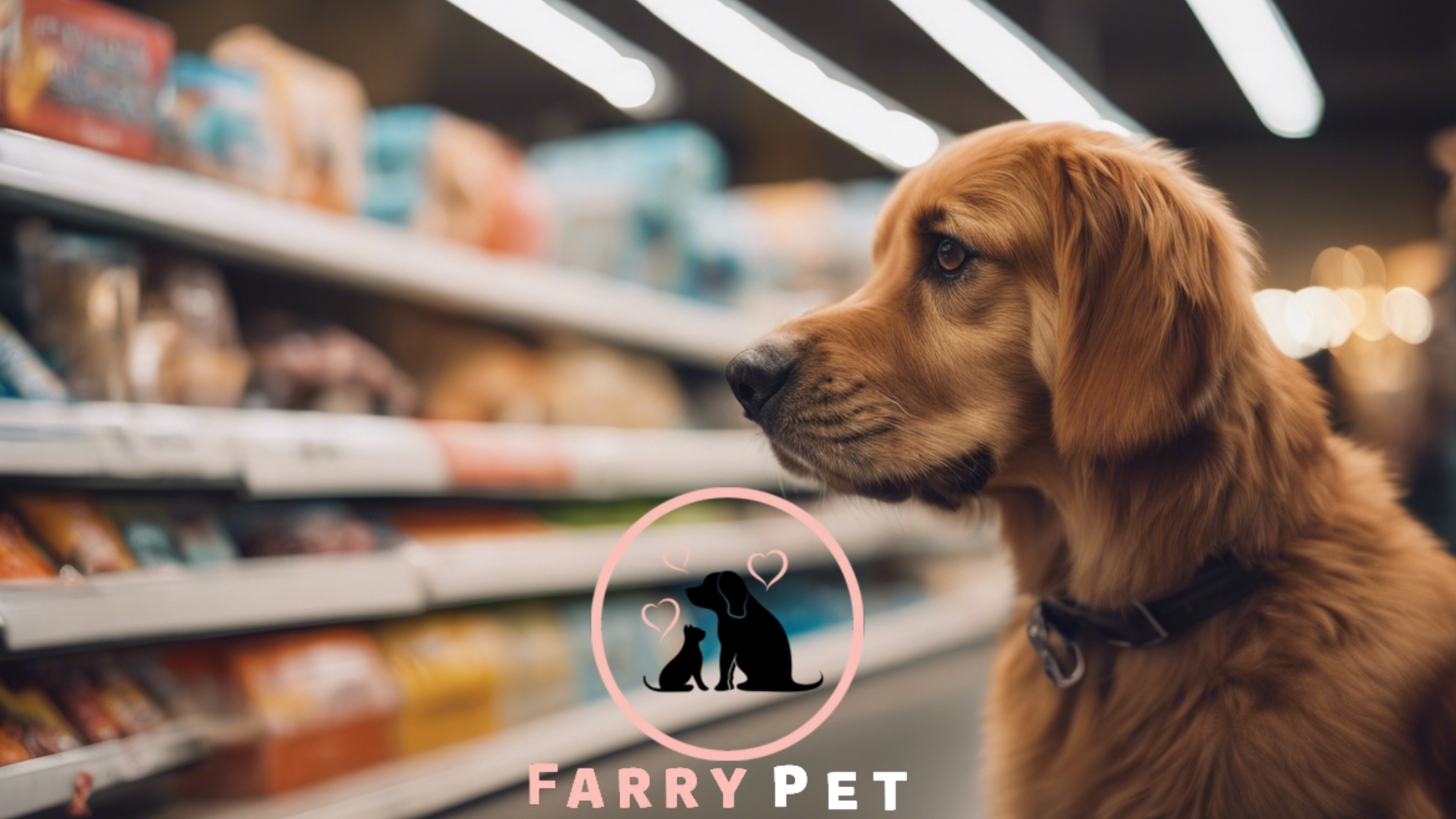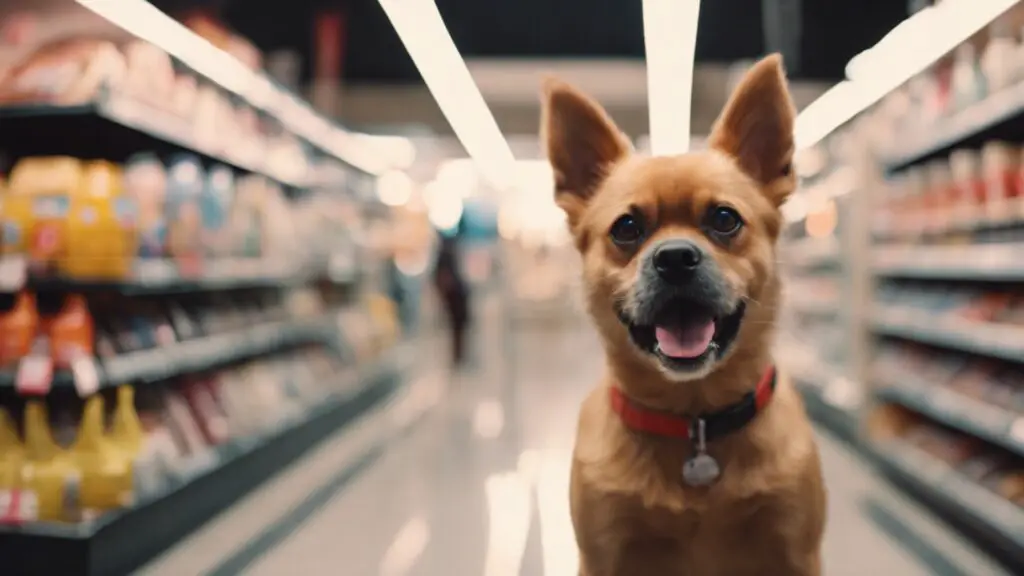
Pets aren’t allowed in most stores due to health and safety regulations. These rules aim to prevent allergic reactions and maintain hygiene standards.
Entering a retail environment, customers expect a clean and safe shopping experience, a standard that pets could potentially compromise. Not all shoppers are comfortable around animals, and some may have severe allergies.
Store policies often reflect such concerns. Health codes, especially in food stores, typically mandate a pet-free environment to prevent contamination.
Additionally, animals can behave unpredictably, posing a risk of injury or damage to merchandise. Most stores uphold a no-pet policy to accommodate all customers and abide by legal requirements.
This also protects the pets’ well-being, which might become stressed in unfamiliar, crowded spaces. Subsequently, service animals trained to assist individuals with disabilities are an exception to this rule, acknowledged by law to have rightful access to public spaces.
Health Regulations and Public Safety
Stepping into a store, one expects a clean and safe environment. Stores often follow strict health and safety guidelines. This means pets may not always be welcome.
Risk of Allergies
Pets can trigger allergic reactions for some customers. This is a key reason why they are not allowed in stores. It’s all about keeping the air safe for everyone to breathe. Here are two main allergy triggers:
- Dander: Tiny, even invisible, flakes of skin shed by pets.
- Fur: A common allergen that can transport other allergens like pollen and dust.
Stores must consider all patrons, including those with allergies. By limiting pet access, they create a safer space for shoppers.
Sanitation Concerns
Sanitation is vital in stores, especially in areas where food is present. Pets might be clean, but they can still carry germs. Stores aim to maintain hygiene standards and minimize risks.
Here are major sanitation issues:
| Sanitation Issue | Details |
|---|---|
| Accidents | Pets might urinate or defecate, leading to potential health hazards. |
| Contamination | Pets can spread germs onto surfaces which can then be touched by humans. |
| Food Safety | Pets near food items can lead to cross-contamination concerns. |
Stores implement a ‘no pets’ policy to ensure the well-being of all customers. It helps in maintaining a controlled and healthy shopping environment.
The Legal Landscape
Ever wondered why Fido can’t join you while shopping for groceries? It all comes down to the law. Rules for pets in stores are not just store policy. Legal guidelines also shape them. These rules protect people, pets, and property.
Let’s delve into the legal reasons behind the no-pets policy in many stores.
Ada Compliance
The Americans with Disabilities Act (ADA) sets the stage for service animals in stores. Stores must allow service animals. These are not pets. They assist people with disabilities. Only dogs and miniature horses can be service animals.
- Service animals must have training.
- They perform tasks for their owners.
- Pets that provide emotional support do not qualify under ADA rules.
Stores can ask two questions to verify a service animal:
- Is the animal required because of a disability?
- What work or task has the animal been trained to perform?
Retailers do not have to admit pets that are not service animals. This is the law.
State and Local Ordinances
Each state and city has its own rules. Some places might be pet-friendly. Others are not. Local health codes often rule out pets in stores that sell food. This is to keep the area clean and prevent food contamination.
| State | Pet-Friendly Stores Allowed? | Exceptions |
| California | No | Service Animals Only |
| New York | Varies | Depends on Local Ordinance |
Check local laws for details about your area. Some stores can welcome pets if they choose to. They must still follow state and city rules.
Impact on Store Operations
Allowing pets in stores sounds like a friendly idea, but it challenges operations. Pets can affect how smoothly a store runs daily. They can disrupt work and lead to possible damage.
Let’s explore some specific impacts on store operations.
Distraction for Employees
Employee focus is critical for excellent customer service. Pets in stores can pull workers’ attention away. Here are some ways this could happen:
- They may need to monitor pet behaviors and ensure safety for all.
- Workers might have to address pet-related incidents, like calming scared animals.
- Some employees might have allergies or fears, causing discomfort and distraction.
- With pets around, staff tasks could take longer, reducing overall productivity.
Potential for Damage
Pets naturally explore their surroundings, leading to unintended consequences. Think of these possibilities:
| Merchandise Risks: | Pets might chew, soil, or break items. |
| Property Damage: | Accidental scratches or bites could harm fixtures. |
| Cleaning Costs: | Extra work might be needed to clean up after pets. |
| Insurance Rates: | With pets around, stores might face higher premiums. |
Considerations for Other Customers
Considerations for Other Customers often shape store policies regarding pets. Shops want to ensure a comfortable and safe experience for everyone. Pets may pose challenges to this goal, leading to specific store rules.
Fear and Discomfort
Not all shoppers feel at ease around animals. People’s fears can vary from mild unease to severe phobias. For those with allergies, a pet’s presence increases discomfort. Bodily reactions may include sneezing, watery eyes, or even respiratory distress.
Creating a Neutral Environment
Consider these points:
- Neutral Spaces: Stores strive to create a pleasant atmosphere for all. Pets might affect this balance.
- Sensory Impact: Animal sounds and smells may distract or upset customers.
- Hygiene: Cleanliness is crucial in establishments. Pets raise concerns about fur, dander, or accidents.
Animals and Food Products
Animals and Food Products often don’t mix well in retail environments. Understandably, many stores restrict pet access. This policy ensures a clean, safe shopping area for all customers. Specifically, when foods are involved, the reasons for these restrictions become even more significant.
Cross-contamination Risks
Pets in stores could lead to cross-contamination. This means harmful bacteria from animals may spread to food items. A pet’s fur or paws might carry these germs. They can transfer them onto surfaces like food shelving or baskets. Consider these risks:
- Transfer of pet dander to food products or eating utensils.
- Accidental contact between animals and fresh produce.
- Potential spillage of pet wastes in aisles.
These scenarios pose a severe health threat to consumers. Therefore, stores opt to enforce a no-pets policy.
Food Safety Standards
Food stores must comply with strict food safety standards. These rules are in place to protect customers. For example, the Food and Drug Administration (FDA) sets guidelines for cleanliness in food retail. Pets in stores can make it hard to maintain these standards.
Some key points under these standards include:
- Prevention of foodborne illnesses through cleanliness.
- Minimizing exposure of food to potential contaminants.
- Ensuring all employees adhere to hygiene protocols.
Allowing pets could jeopardize these safety practices. Thus, animals stay out so stores can guarantee a safe food shopping experience.
Exceptions To the Rule
While most stores maintain a strict ‘no pets’ policy, there are important exceptions that pet owners should be aware of. Understanding these can make shopping with pets less puzzling.
Service Animals
Service animals are a critical exception to the ‘no pets’ rule. The Americans with Disabilities Act (ADA) protects the rights of individuals with disabilities to be accompanied by their service animals in most public places.
- Service animals are highly trained to perform specific tasks for people with disabilities.
- They are not considered pets.
- Stores must allow service animals to enter.
- Laws require these animals to have access to public areas.
Pet-friendly Stores Policy
Some retailers have a pet-friendly policy. These stores welcome pets to shop along with their owners.
| Store Type | Policy |
|---|---|
| Home Improvement | Many allow leashed pets |
| Bookstores | Selected chains are pet-friendly |
| Boutiques | Often welcome pets |
| Outdoor Gear | Pets can usually join shoppers |
Always check the store’s website or call ahead to confirm their pet policy. Some stores may restrict access to certain pet types or require your pet to be on a leash.

Frequently Asked Questions
Why Do Stores Not Allow Pets?
Stores often prohibit pets from maintaining hygiene, ensuring safety for all customers, and preventing potential allergies or damages.
Why Aren’t Dogs Allowed in Shops?
Dogs are often prohibited in shops due to health and safety regulations, potential allergies, and to avoid disturbances or damage.
Why doesn’t Walmart Allow Pets?
Walmart prioritizes health and safety, thus only service animals are allowed in stores to comply with the Americans with Disabilities Act. Pets may pose allergy risks or cause accidents, leading to this policy.
Why Are Animals Not Allowed in Grocery Stores?
Animals are generally prohibited in grocery stores for health and safety reasons. This policy helps maintain sanitary conditions and prevents contamination of food products. Exceptions are made for service animals.
Why Do Stores Ban Pets Inside?
Pets may be prohibited in stores due to health codes, potential allergies, safety concerns, and the risk of accidents or damage.
Conclusion
Navigating the pet policy landscape can be tricky. Store regulations are there for everyone’s well-being. While we adore our furry friends, safety and cleanliness must come first.
Remember, pet-friendly alternatives do exist! Next time you shop, consider these insights before bringing a four-legged companion.






